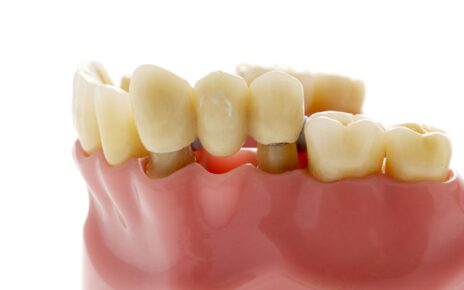For much of the 20th century, the United States Army used asbestos extensively. This naturally occurring mineral was prized for its durability, affordability, and fire-resistant properties. Asbestos was used in various applications, from constructing buildings to manufacturing vehicle parts. Unfortunately, this widespread use has had severe health consequences for many veterans.
Common Asbestos-Containing Materials
Asbestos was found in numerous materials used by the Army, including:
- Insulation for buildings and vehicles
- Brake pads and clutches
- Gaskets and seals
- Roofing and flooring materials
- Heat-resistant fabrics
Reasons for Asbestos Use in the Military
The Army relied on asbestos for several reasons:
- Durability: Asbestos fibers are incredibly strong and resistant to wear and tear.
- Fire Resistance: The mineral’s natural fire-resistant properties made it ideal for use in military applications where fire hazards were a concern.
- Cost-Effectiveness: Asbestos was relatively inexpensive, making it a cost-effective solution for various needs.
Timeline of Asbestos Regulations
The use of asbestos in the Army began to decline in the late 1970s and early 1980s as the health risks became more widely known. Key milestones in asbestos regulation include:
- 1970s: Initial regulations began to limit the use of asbestos in certain applications.
- 1980s: The Army started phasing out asbestos-containing materials and began extensive abatement programs.
- 1990s and Beyond: Ongoing efforts to remove and replace asbestos in older buildings and equipment continue to this day.
Despite these regulations, asbestos remains a concern in older military structures and equipment, posing a risk to current service members and veterans alike.
High-Risk Occupations for Army Veterans
Army veterans who worked in certain jobs faced a higher risk of asbestos exposure. These roles often involved handling materials or working in environments where asbestos was present. Here are some risk factors for army veterans:
Vehicle Maintenance Workers
Vehicle maintenance workers were frequently exposed to asbestos. Asbestos was used in many vehicle parts, such as brake pads, clutches, and gaskets. When these parts were repaired or replaced, asbestos fibers could be released into the air, posing a health risk.
Construction and Demolition Workers
Construction and demolition workers often dealt with asbestos-containing materials. These materials were used in buildings and other structures on Army bases. When these structures were built, renovated, or demolished, asbestos fibers could become airborne, leading to potential exposure.
Insulators and Pipefitters
Insulators and pipefitters worked with materials that contained asbestos to insulate pipes and other equipment. This work often involved cutting or disturbing asbestos-containing insulation, which could release harmful fibers into the air. These workers were at a high risk of inhaling asbestos fibers, which could lead to serious health issues.
Health Impacts of Asbestos Exposure
Mesothelioma and Other Cancers
Asbestos exposure is the main cause of mesothelioma, a rare and aggressive cancer. When asbestos fibers are inhaled, they can get stuck in the lining of the lungs, abdomen, or heart. Over time, these fibers can cause inflammation and scarring, leading to the development of cancer. Besides mesothelioma, asbestos exposure can also lead to lung cancer and other cancers, such as those affecting the larynx and ovaries.
Respiratory Diseases
Inhaling asbestos fibers can also cause serious respiratory diseases. Asbestosis is a chronic lung disease that results from prolonged exposure to asbestos. It causes lung tissue scarring, leading to symptoms like shortness of breath and a persistent cough. Other respiratory issues include pleural plaques, pleural effusions, and chronic obstructive pulmonary disease (COPD).
Latency Period and Diagnosis
One of the challenges with asbestos-related diseases is their long latency period. Symptoms of mesothelioma and other asbestos-related conditions can take decades to appear, often between 20 to 60 years after initial exposure. This delay makes early diagnosis difficult, and by the time symptoms manifest, the disease is often in an advanced stage. Regular medical check-ups and informing healthcare providers about any history of asbestos exposure can aid in early detection and treatment.
VA Benefits and Compensation for Affected Veterans
Army veterans diagnosed with mesothelioma due to asbestos exposure during their service may be eligible for various VA benefits and compensation programs. These benefits aim to provide financial support and healthcare services to affected veterans and their families.
VA Disability Compensation
VA Disability Compensation is a monthly, tax-free payment for veterans with service-connected disabilities. Veterans with mesothelioma are often considered 100% disabled, making them eligible for the highest compensation rates. Single veterans can receive a monthly payment of $3,877, while married veterans may receive $4,098. The amount can vary based on the number of dependents.
VA Health Care Services
Veterans with mesothelioma can access a range of healthcare services through the VA. These services include medical treatments, hospital care, and specialized care for asbestos-related conditions. To qualify, veterans must prove that at least 50% of their asbestos exposure occurred during active duty.
Special Monthly Compensation
Special Monthly Compensation (SMC) is an additional benefit for veterans who need special assistance due to their disabilities. This can include in-home care or help with daily activities. Payments range from $4,651 to over $6,382 per month, depending on the level of care required and the number of dependents.
Legal Options for Army Veterans with Mesothelioma
Army veterans diagnosed with mesothelioma have several legal options to seek compensation. These options can help cover medical expenses, lost wages, and provide financial support for their families.
Filing a Lawsuit
Veterans with mesothelioma can file personal injury lawsuits against manufacturers of asbestos-containing products. These lawsuits can result in significant compensation, often exceeding $1 million. Importantly, pursuing these claims does not affect a veteran’s ability to receive VA benefits.
Asbestos Trust Funds
Asbestos trust funds were established by companies that produced asbestos products and later went bankrupt. These funds, which total over $30 billion, are set aside to compensate current and future asbestos victims. Veterans can file claims with these trusts to receive financial compensation.
Legal Assistance Resources
Navigating the legal landscape can be challenging, but there are resources available to help. Experienced mesothelioma law firms, like the Lanier Law Firm, specialize in assisting veterans with their claims. These firms can provide the necessary support and expertise to ensure veterans receive the compensation they deserve.
Preventive Measures and Safety Protocols
Modern-Day Asbestos Regulations
To lower the risk of mesothelioma, modern regulations have been put in place. These rules help limit asbestos exposure in workplaces and public areas. The Occupational Safety and Health Administration (OSHA) has guidelines to ensure safety. These include testing and monitoring asbestos levels, using personal protective equipment (PPE), and following decontamination procedures. Federal whistleblower protection laws also protect workers who report possible asbestos exposure.
Safety Measures for Current Soldiers
Current soldiers can take steps to avoid asbestos exposure. They should be trained in asbestos safety and use PPE when needed. It’s also important to follow decontamination procedures to prevent bringing asbestos fibers home on clothing or gear. Soldiers should be aware of the risks and know how to handle materials that might contain asbestos.
Asbestos Abatement Programs
Asbestos abatement programs are crucial for removing asbestos safely. These programs involve hiring professionals to test for asbestos, assess the risk, and remove it properly. It’s important not to try removing asbestos yourself, especially in older buildings or homes built before 1980. Always hire a professional to handle asbestos removal to ensure safety.
Support Resources for Veterans and Families
Army veterans diagnosed with mesothelioma and their families have access to a variety of support resources. These resources aim to provide emotional, financial, and practical assistance during challenging times.





